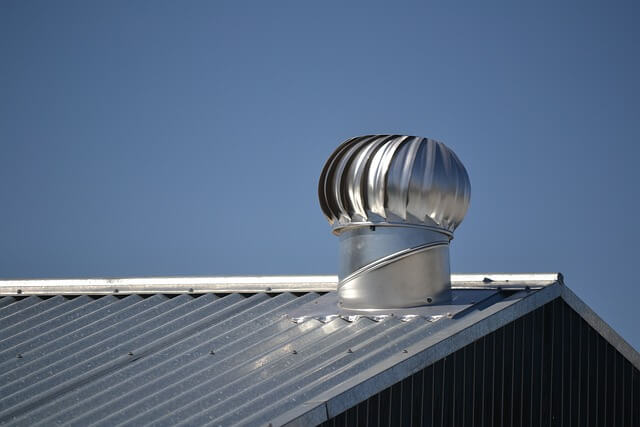Preventing Mold and Mildew in Bathroom Grout: Effective Ways
Mold and mildew in bathroom grout are common problems that can be difficult to prevent. These fungi thrive in damp environments and can quickly spread throughout the bathroom, causing unsightly stains and unpleasant odors. Fortunately, there are several effective ways to prevent mold and mildew in bathroom grout.
One of the most important steps in preventing mold and mildew in bathroom grout is to keep the bathroom dry. After taking a shower or bath, use a squeegee or towel to remove excess water from the walls and floor. Make sure the bathroom is well-ventilated by using a fan or opening a window. This will help to reduce humidity and prevent moisture from accumulating in the grout.
Another effective way to prevent mold and mildew in bathroom grout is to clean the grout regularly. Use a mildew-resistant cleaner and a stiff-bristled brush to scrub the grout and remove any dirt or debris. Avoid using bleach or other harsh chemicals, as these can damage the grout and make it more susceptible to mold and mildew growth. By following these simple tips, homeowners can keep their bathroom grout clean and mold-free.
Understanding Mold and Mildew
Mold and mildew are fungi that thrive in humid and moist environments, making bathrooms a prime breeding ground for these unwanted guests. They can grow on any surface, but they are most commonly found on grout lines, shower curtains, and bathroom tiles.
Mold and mildew can cause a variety of health problems, including respiratory issues, allergic reactions, and skin irritation. They can also cause structural damage to your home if left unchecked. That’s why it’s important to take steps to prevent mold and mildew growth in your bathroom.
Mold and mildew are not the same thing, but they are often used interchangeably. Mold is a type of fungus that has a fuzzy or slimy texture and can be black, green, yellow, or white. Mildew, on the other hand, is a type of fungus that has a powdery or downy texture and is usually white or gray.
Both mold and mildew need moisture to grow. In the bathroom, this moisture can come from a variety of sources, including steam from hot showers, leaks, and condensation. To prevent mold and mildew growth, it’s important to keep your bathroom dry and well-ventilated. This can be achieved by using an exhaust fan, opening windows, and wiping down surfaces after use.
Regular cleaning is also important in preventing mold and mildew growth. Using a mildew-resistant shower curtain, cleaning bathroom tiles with a solution of vinegar and water, and scrubbing grout lines with a mixture of baking soda and water can all help prevent mold and mildew growth in your bathroom.

Importance of Bathroom Ventilation
Proper ventilation is crucial to prevent mold and mildew growth in bathroom grout. When moisture is allowed to accumulate in the bathroom, it creates an ideal environment for mold and mildew to thrive. Proper ventilation helps to reduce humidity levels, preventing the growth of mold and mildew.
Proper Use of Exhaust Fans
Exhaust fans are an essential tool to keep the bathroom well-ventilated. They help to remove excess moisture from the bathroom, preventing the growth of mold and mildew. It is recommended to keep the exhaust fan running during and after showering or bathing to ensure proper ventilation.
One important thing to keep in mind is to ensure that the exhaust fan vents outside of the house rather than into the attic or ceiling space. If the fan vents into the attic or ceiling space, it can lead to the growth of mold and mildew in those areas.
Window Venting Strategies
Another effective way to ventilate the bathroom is by opening the windows. This allows fresh air to circulate in the bathroom, reducing humidity levels and preventing the growth of mold and mildew.
If the bathroom does not have a window, it is recommended to install one to allow natural ventilation. In addition, keeping the bathroom door open after showering or bathing can help to increase air circulation and reduce humidity levels.
Overall, proper ventilation is essential to prevent mold and mildew growth in bathroom grout. By using exhaust fans and window venting strategies, homeowners can ensure that their bathroom stays well-ventilated, reducing the risk of mold and mildew growth.
Daily Maintenance Habits
Preventing mold and mildew in bathroom grout requires consistent daily maintenance habits. Here are some effective ways to keep your bathroom grout clean and mold-free.
Wiping Down Surfaces
Regularly wiping down bathroom surfaces with a clean, dry towel can help prevent mold and mildew growth. Moisture is the main cause of mold growth, so it is important to keep surfaces dry. After using the shower or bathtub, be sure to wipe down the walls and floor with a towel to remove any excess water. This can help prevent mold growth in the grout lines.
Using a Squeegee
The use of a squeegee is a simple yet highly effective method to prevent mold and mildew in bathroom grout. This tool is essential for maintaining a dry environment in your bathroom, a key factor in mold prevention. When you use a squeegee after each shower, you’re actively removing excess water from the walls, tiles, and grout. This action significantly reduces the moisture that mold and mildew need to thrive.
Employing a squeegee should be a regular part of your bathroom routine. It’s a quick and efficient way to eliminate water droplets that can linger on surfaces and contribute to the humid conditions mold loves. For best results, make sure to cover all tiled areas and pay special attention to the grout lines, where water tends to accumulate. Using a squeegee not only helps in keeping these areas dry but also maintains the aesthetic appeal of your bathroom tiles by preventing water spots and streaks.
Incorporating daily squeegee use into your bathroom maintenance habits is a proactive step towards a healthier living space. This practice, combined with effective ventilation and regular cleaning routines, forms a comprehensive strategy for preventing mold and mildew growth. These methods are not only simple to implement but also play a crucial role in sustaining a clean, dry, and hygienic bathroom environment. By adopting these habits, you are safeguarding the longevity of your bathroom surfaces and ensuring a cleaner, more pleasant space for your daily routines.
Choosing the Right Cleaning Products
Cleaning products play a crucial role in preventing mold and mildew growth in bathroom grout. There are various types of cleaning products available in the market, and choosing the right one can be overwhelming. Here are some options to consider:
Mold-Resistant Cleaners
Mold-resistant cleaners are specifically designed to prevent mold growth in damp areas like bathrooms. These cleaners contain chemicals that kill mold spores and prevent them from coming back. They are available in various forms like sprays, foams, and gels. Some popular mold-resistant cleaners include:
- Tilex Mold and Mildew Remover: This spray cleaner contains bleach and is effective in removing tough stains and mold.
- Clorox Plus Tilex Mold and Mildew Remover: This foaming cleaner also contains bleach and is ideal for vertical surfaces like shower walls.
- Zep Mold Stain and Mildew Stain Remover: This gel cleaner is perfect for removing stubborn mold stains from grout and tiles.
Natural Alternatives
If you prefer to use natural cleaning products, there are several options available. Natural cleaners are eco-friendly and safe for use around children and pets. Here are some natural alternatives to consider:
- Vinegar: Vinegar is a natural disinfectant and can kill mold spores. Mix equal parts of vinegar and water in a spray bottle and apply it to the affected area. Let it sit for a few minutes before wiping it off with a damp cloth.
- Baking soda: Baking soda is a mild abrasive and can be used to scrub away mold and mildew stains. Mix baking soda and water to form a paste and apply it to the affected area. Let it sit for a few minutes before scrubbing it with a brush and rinsing it off with water.
- Tea tree oil: Tea tree oil is a natural antifungal and can kill mold spores. Mix a few drops of tea tree oil with water in a spray bottle and apply it to the affected area. Let it sit for a few minutes before wiping it off with a damp cloth.
When choosing a cleaning product, it’s important to read the label and follow the instructions carefully. Some products may not be suitable for certain surfaces or may require protective gear like gloves and masks. It’s also important to test the product on a small, inconspicuous area before using it on a larger scale.
Regular Cleaning Schedule
Regular cleaning is essential to prevent mold and mildew growth in bathroom grout. By keeping the grout clean, you can prevent moisture from accumulating and creating the perfect environment for mold and mildew to thrive. Here are some tips for establishing a regular cleaning schedule:
Frequency of Deep Cleans
Deep cleaning the bathroom grout is necessary to remove any built-up dirt and grime that can contribute to mold and mildew growth. The frequency of deep cleans will depend on how often the bathroom is used and how quickly grime accumulates.
As a general rule, deep cleaning should be done at least once a month. However, if the bathroom is used frequently or if the grout is exposed to a lot of moisture, it may be necessary to deep clean more often.
Targeting Grout Lines
When cleaning the bathroom, it’s important to pay special attention to the grout lines. These are the areas where mold and mildew are most likely to grow.
To effectively target the grout lines, use a stiff-bristled brush and a cleaning solution specifically designed for grout. Apply the solution to the grout lines and scrub vigorously. Rinse with water and dry thoroughly.
In addition to deep cleaning, it’s also important to wipe down the bathroom surfaces regularly to prevent the accumulation of moisture. This can be done with a simple solution of water and vinegar or a commercial bathroom cleaner.
By establishing a regular cleaning schedule and targeting the grout lines, you can prevent mold and mildew growth in bathroom grout.
Sealing Grout for Protection
One of the most effective ways to prevent mold and mildew growth in bathroom grout is by sealing it. By doing so, you create a barrier against moisture, which is the main cause of mold and mildew growth. There are different types of sealants and application techniques to choose from, and it is important to select the right one for your specific needs.
Types of Sealants
There are two main types of sealants: penetrating and surface sealants. Penetrating sealants seep into the grout and create a waterproof barrier that prevents moisture from penetrating the grout. Surface sealants, on the other hand, sit on top of the grout and create a protective layer that repels water.
Penetrating sealants are ideal for new grout because they do not change the appearance of the grout. They are also long-lasting and can protect the grout for up to 15 years. Surface sealants, on the other hand, are ideal for older grout because they can help restore its color and protect it from further damage.
Application Techniques
The application technique you choose will depend on the type of sealant you select. Penetrating sealants are easy to apply and require little preparation. Simply clean the grout, apply the sealant, and wipe off any excess. Surface sealants, on the other hand, require a bit more preparation. You will need to clean the grout, remove any existing sealant, and apply the new sealant with a brush or roller.
It is important to follow the manufacturer’s instructions when applying sealant to ensure that it is applied correctly. Applying too much or too little can affect the effectiveness of the sealant. It is also important to allow the sealant to dry completely before using the shower or bath.
Sealing grout is an effective way to prevent mold and mildew growth in the bathroom. By selecting the right type of sealant and following the correct application technique, you can protect your grout and prolong its lifespan.





